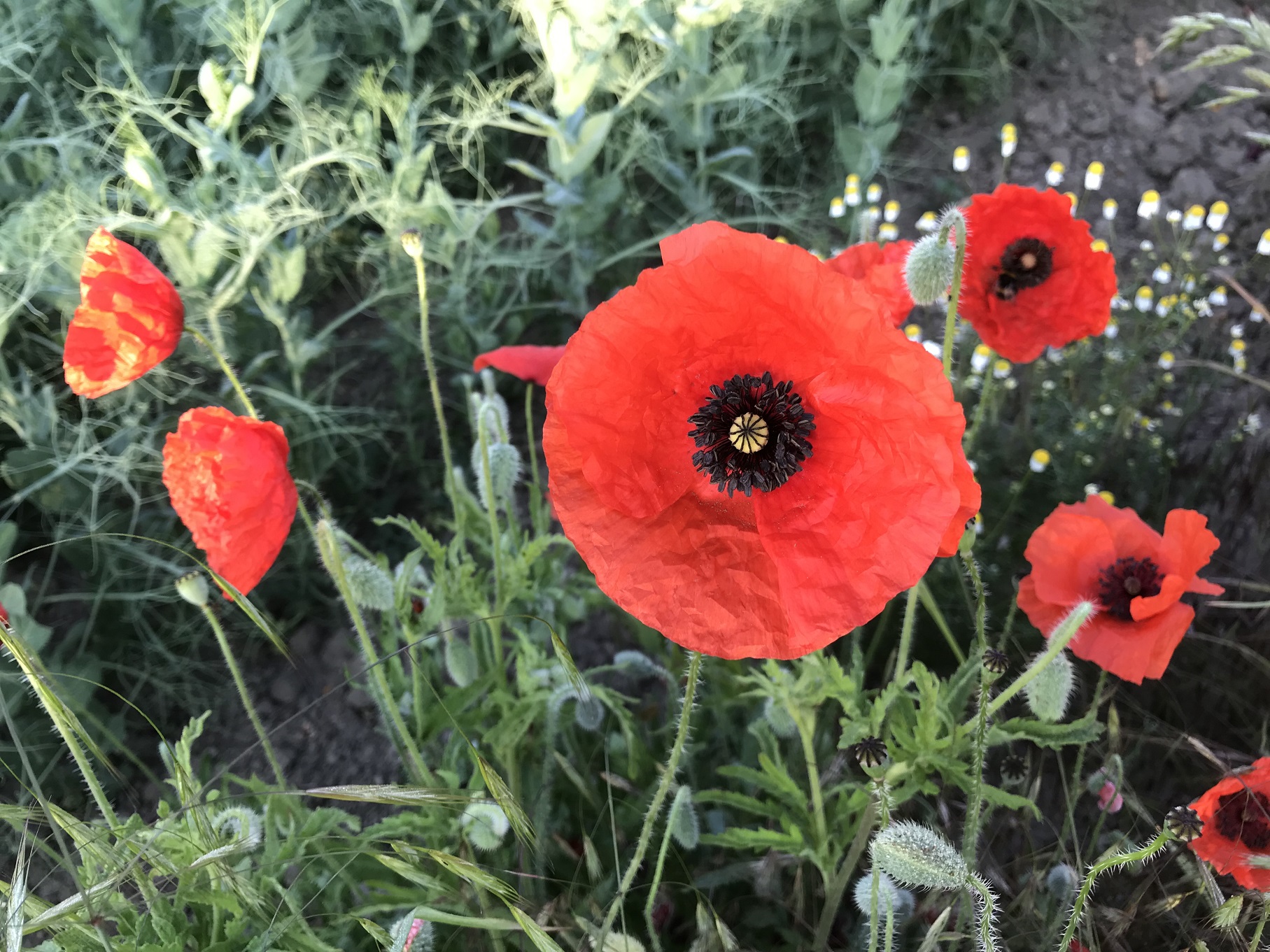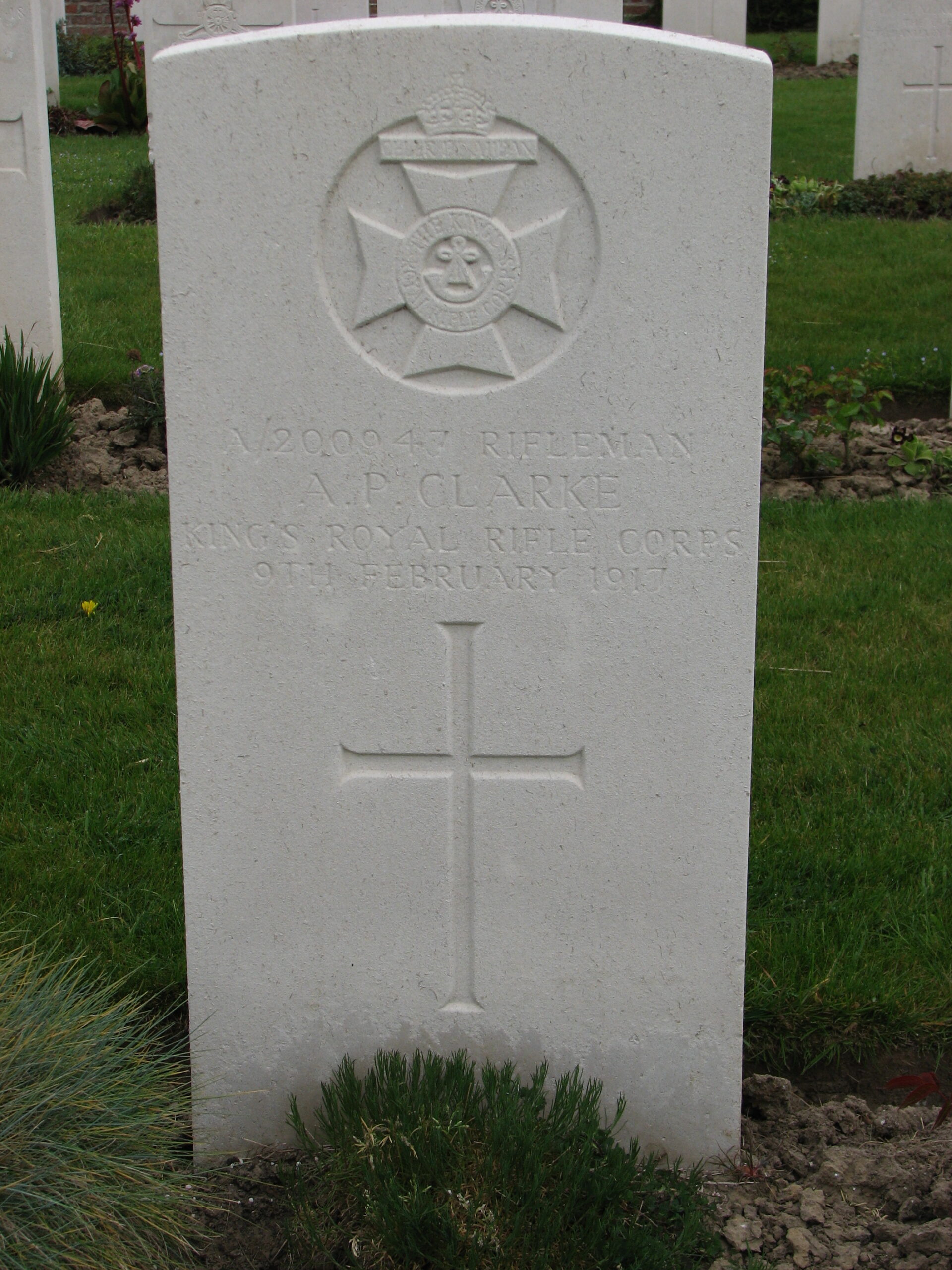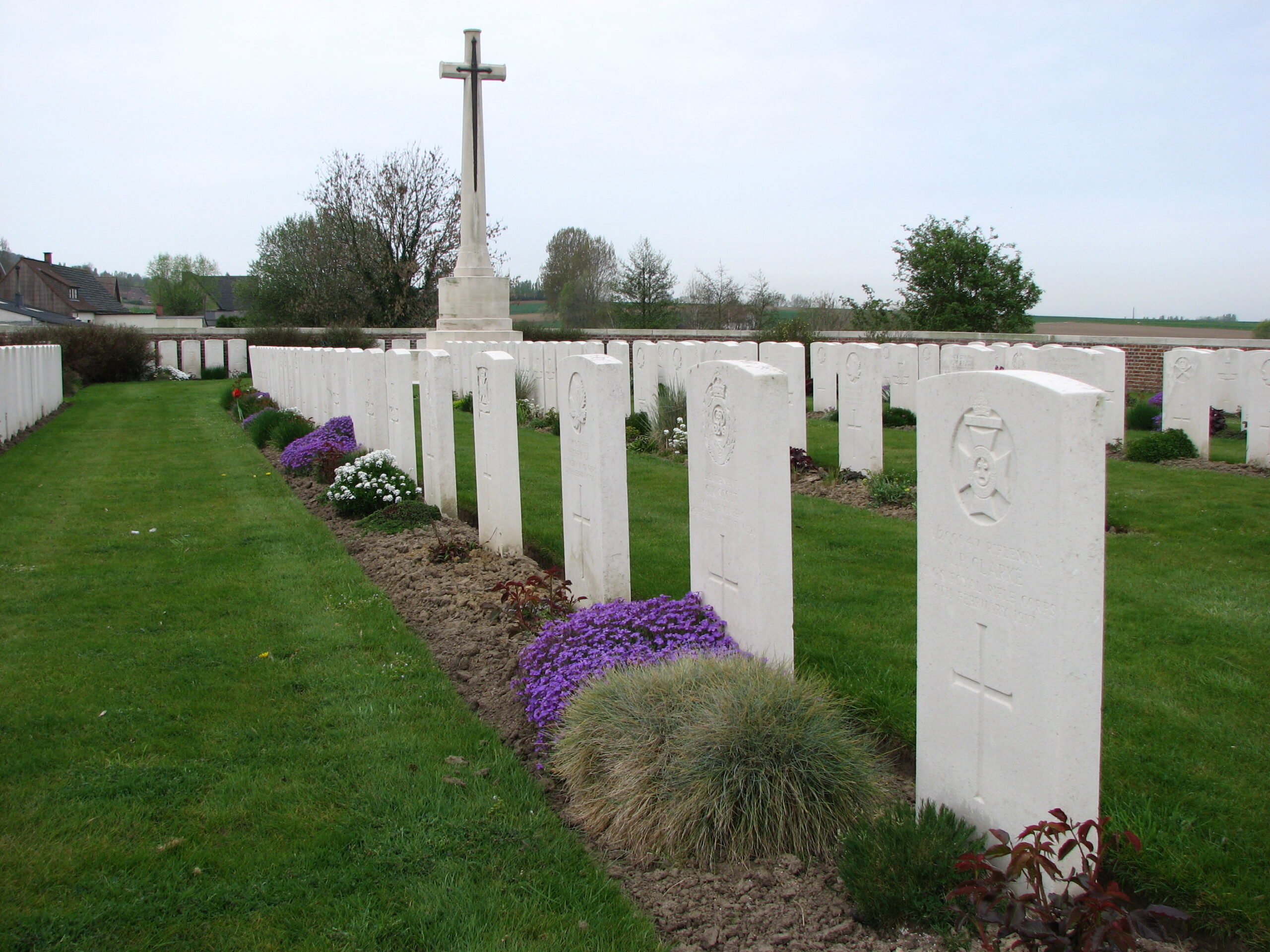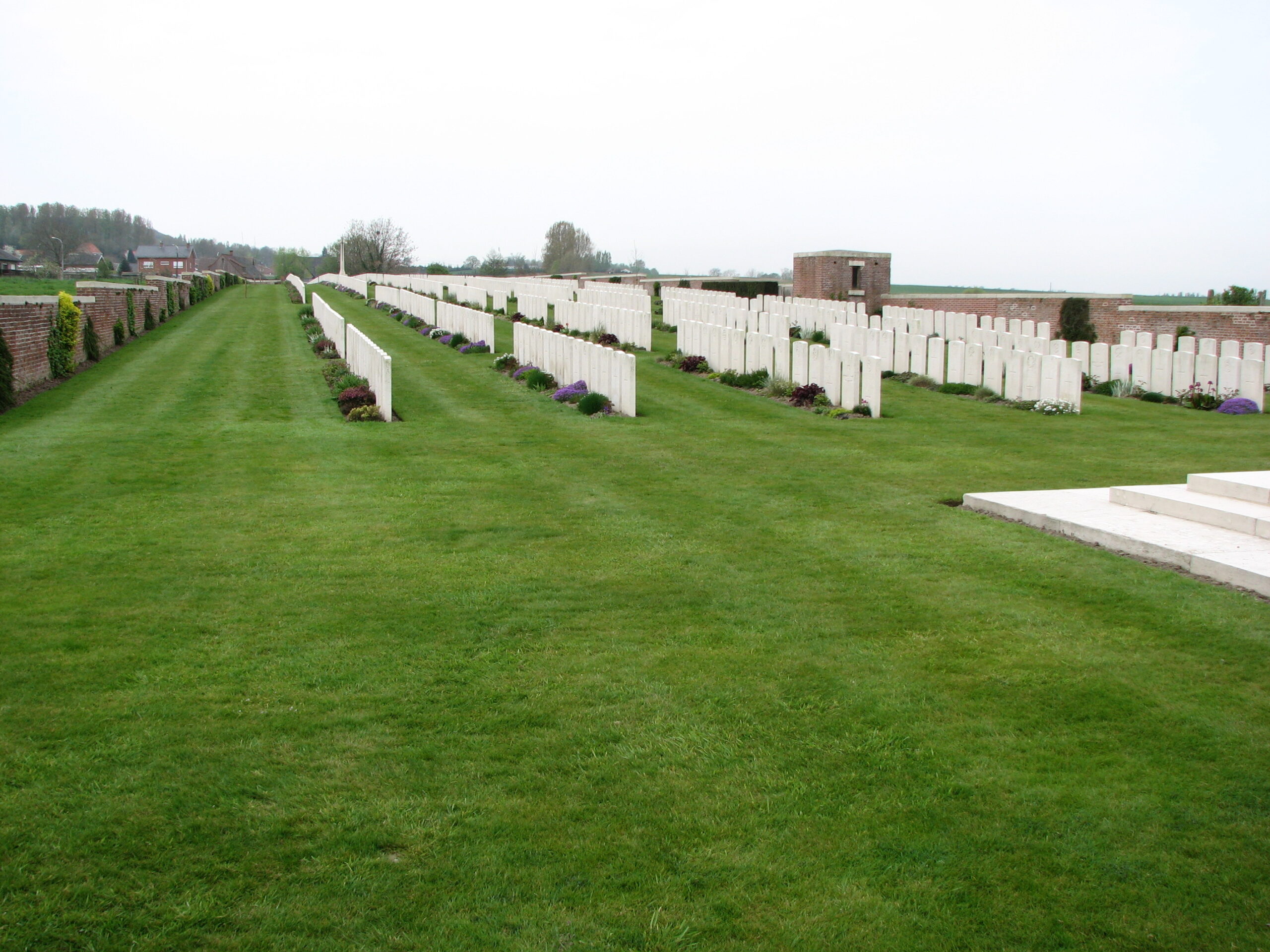Arthur Clark (1874 - 1917)
The oldest of the East Bergholt men to be killed in action in the Great War, Arthur served with the 21st Battalion of the King’s Royal Rifles Corps. He was killed in action in the Ypres Salient in February 1917.
- 17
- Died in the Great War
- 51.96886, 1.02411
Details
| Name: |
Arthur Pleasance Clark 1 There is disagreement about the spelling of both Arthur’s middle name and surname. I have used the spelling found on the village War Memorial and Roll of Honour, which also reflects – with one possible exception – how his name was spelt whilst he was in the Army. |
| Service: | British Army |
| Unit: | 21st Battalion, King’s Royal Rifle Corps |
| Regimental Number: | A/200947 |
| Rank: | Rifleman |
| Date of Death: | 9th February 1917 |
| Age: | 42 |
| Buried: | Plot II, Row B, Grave 25, La Clytte Military Cemetery, De Klijte, near Ieper, Belgium |
Family Background and Early Life
Arthur Pleasance Clark was born in East Bergholt on 15th June 1874, the son of Charlotte Clark, who was a domestic servant. Like many working class people of that time, Charlotte had left home and gone “into service” with a middle or upper class family.
Arthur was raised by his grandparents, Charles and Sarah Clarke, as one of their own children, the youngest of whom were similar ages to him. Charles and Sarah lived at Burnt Oak, on what was then called Manningtree Road but is now called White Horse Road.
Arthur started at the village school on 8th October 1877. We do not know exactly when he left, though he may have been as young as 10, which was permitted at that time. Arthur’s grandfather was a Gardener (and later a Groom as well), and Arthur also followed this profession after he left school.
The March 1901 Census shows Arthur boarding at a house in Leiston, and his occupation as Labourer. He was quite possibly employed at the Works of Richard Garrett and Sons, a well-known manufacturer of agricultural machinery and steam engines. Ten years later, Arthur’s occupation is shown as a Jobbing Gardener, and he was living – or at least staying – with his grandmother in East Bergholt.
Joining Up
By the autumn of 1915, Arthur was living at Glemsford, north-west of Sudbury. In late November or early December of that year, he enlisted in the Army under “the Group Scheme” at Colchester, and expressed a preference to join the Essex Regiment. 2 The Group Scheme was commonly called the Derby Scheme after Lord Derby, the Director-General of Recruiting. It was effectively a last ditch attempt by the government to increase recruitment by voluntary means, before they had to resort to conscription. He may not have actually been called up until March or April of 1916, when he would have joined one of the Regiment’s Reserve battalions for his basic training.
Arthur was almost certainly part of a large group of men from the Essex Regiment, who were sent to France on 28 September 1916, and nominally posted to the 2nd Battalion. They never actually joined that battalion “in the field”. From 1916 onwards, it had become common for an infantry soldier to be transferred to another regiment upon arrival in France. After three weeks at a training camp, Arthur and his comrades were posted to the 21st Battalion of the King’s Royal Rifle Corps.
The 21st had been formed the previous year, in large part from volunteers from the farming communities of Yorkshire, Northumberland and Durham who had volunteered to join the Army. This led to the Battalion’s unofficial name of the “Yeoman Rifles”.
Arthur and the men of his reinforcement draft were replacements for some of the heavy losses suffered by the 21st in the recent fighting during the Battle of the Somme. Like many of the so-called “Pals Battalions”, the character of the 21st was never the same after the loss of so many of its originals.
Flanders
When Arthur joined the Battalion they had transferred from the Somme, and been moved to the the southern part of the Ypres Salient, in Belgium. There they alternated between a period – usually of five days – manning the front line trenches, and then a similar period in support a few miles behind the front.
The official records state that Arthur was killed in action on 9th February 1917. This was at the end of the Battalion’s 5 day “stint” holding the front line between the Ypres- Commines Canal and the village of St. Eloi, just south of Ypres.
Arthur’s body was buried in the military cemetery in the village of La Clytte, near to the Brigade’s Headquarters, and his Battalion’s rest area when it was in support. 3 The Dutch spelling of La Clytte is De Klijte. The Dutch spelling of Ypres is Ieper. After the war, this cemetery was taken over by the Imperial War Graves Commission and further graves were added by the concentration of isolated graves from some of the nearby villages. 4 The Imperial War Graves Commission was renamed the Commonwealth War Graves Commission in 1960.
Copyright © Mark Ashmore, 2024
- 17
- Died in the Great War
- 51.96886, 1.02411




